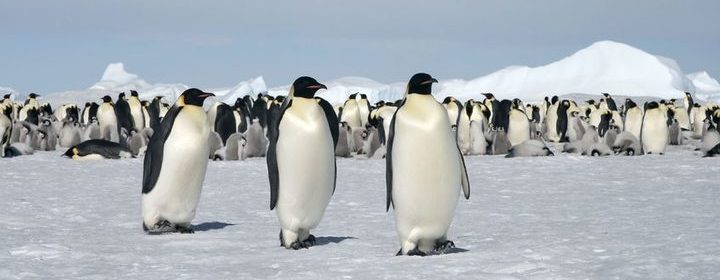Why Did The Worlds 2nd Largest Emperor Penguin Colony Disappear?

|
Getting your Trinity Audio player ready...
|
In 2016, the world’s 2nd largest emperor penguin colony had been wiped out overnight. Thousands of emperor penguin chicks drowned after an ice shelf in Antarctica collapsed.
In the years following the catastrophic collapse of the ice shelf at Halley Bay, Scientists have concluded that no breeding has been detected in the area since.
On average, approximately 15,000 to 24,000 breeding pairs of emperor penguins flocked each year to the Halley Bay site. This amounted to around five to nine percent of the entire global emperor penguin population.
Halley Bay, located in the Weddell Sea was previously considered a refuge for penguins in one of the coldest parts of the continent. It was expected to remain a suitable breeding site for penguins throughout the next century despite climate change affecting Antarctic sea ice. However, almost no emperor penguins have returned to the site.
Phil Trathan, who heads the conservation biology dept at the British Antarctic Survey and is one of the study’s authors said “We haven’t seen a breeding failure on a scale like this in 60 years.”
Emperor penguins require stable sea ice on which to breed, and this icy platform must last from the spring until December, when their chicks fledge.
Emperor penguins are the largest penguin species, weighing up to 40kg and living for approximately 20 years. They incubate their eggs and tend to their chicks on the sea ice. After breeding and tending to the chicks, they return to the open sea.
For over 60 years, the sea ice conditions in the Halley Bay site have remained a stable and reliable breeding site for the emperor penguins. But in 2016, after an onslaught of unusually stormy weather, the ice broke up, well before any emperor chicks would have fledged. Thus, the colony has been almost entirely wiped out.
While the Halley Bay colony has now all but disappeared, the nearby Dawson-Lambton colony has markedly increased in size, making scientists wonder if many of the adult emperors may have migrated to that site, seeking better breeding grounds as environmental conditions continue to evolve.
The penguins’ relocation to a more stable breeding ground is significant and is encouraging, as until now it was unknown whether the penguins would seek out alternative breeding sites in response to devestating changes to their local environment.
The rise in numbers at Dawson-Lambton does not account for all the numbers lost at Halley Bay, Dr Trathan says. “Not everybody has gone to Dawson-Lambton yet,” he says. Some may have sought out other breeding sites or may have chosen not to move at all.
Lead author, Dr Peter Fretwell, says: “We have been tracking the population of this, and other colonies in the region, for the last decade using very high resolution satellite imagery.
“These images have clearly shown the catastrophic breeding failure at this site over the last several years. Our specialized satellite image analysis can detect individuals and penguin huddles, so we can estimate the population based on the known density of the groups to give reliable estimate of colony size.”
Dr Trathan adds: “It is impossible to say whether the changes in sea-ice conditions at Halley Bay are specifically related to climate change, but such a complete failure to breed successfully is unprecedented at this site.“
“Even taking into account levels of ecological uncertainty, published models suggest that emperor penguins numbers are set to fall dramatically, losing 50-70 per cent of their numbers before the end of this century as sea-ice conditions change as a result of climate change.”
The team’s findings are published in the journal, Antarctic Science.

 Print
Print